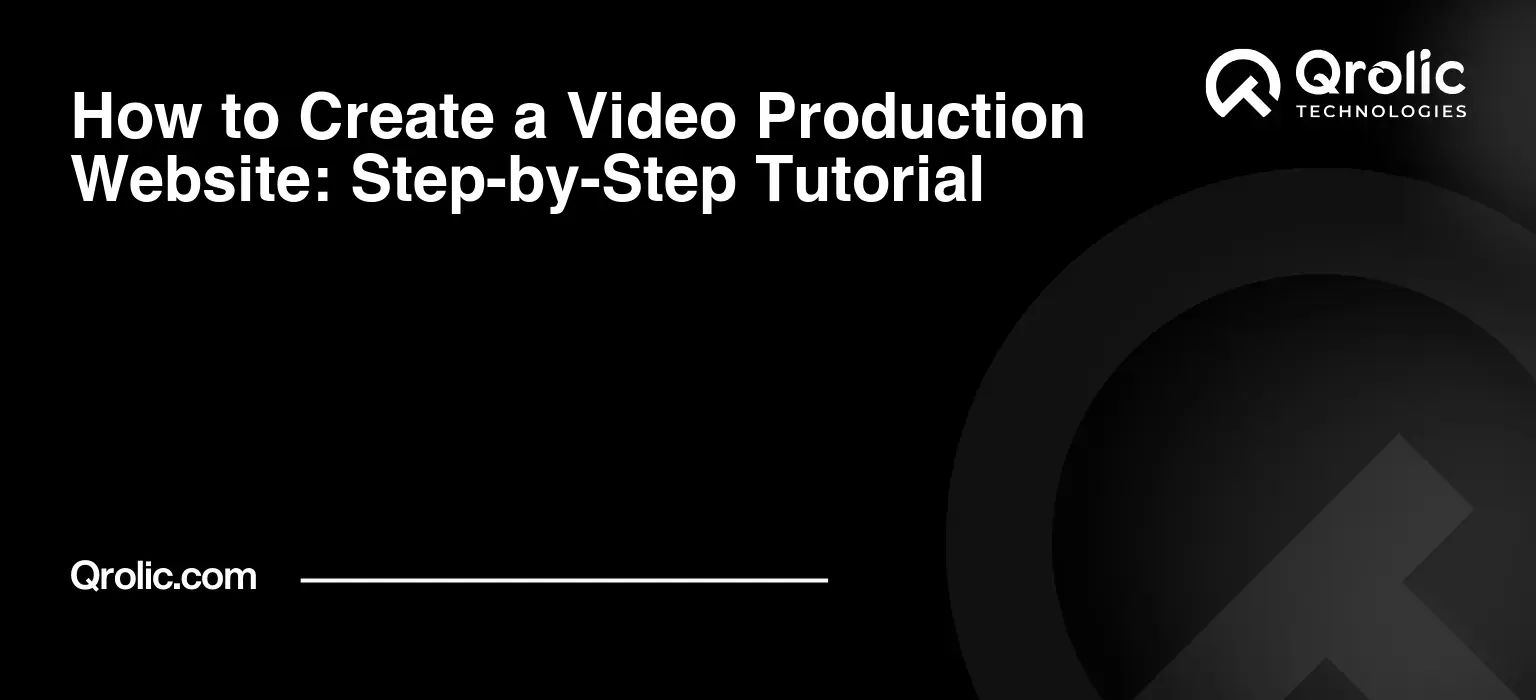Choosing the right video hosting platform is a critical decision for any business serious about video marketing. YouTube and Vimeo are the two titans in this space, each offering a distinct set of features, benefits, and drawbacks. This comprehensive guide will delve deep into the nuances of both platforms, enabling you to make an informed choice that aligns with your business goals.
Quick Summary:
- YouTube offers wide reach, free option, ads.
- Vimeo provides quality, privacy, customization, paid.
- Choose based on your specific business goals.
- Consider a hybrid approach for best results.
Table of Contents
- Understanding the Landscape: Why Video Hosting Matters
- Round 1: Core Features and Functionality – Vimeo vs. YouTube
- YouTube: The Colossus of Content
- Vimeo: The Curator of Quality
- Round 2: Pricing and Plans – What Will It Cost You?
- YouTube Pricing
- Vimeo Pricing
- Round 3: Target Audience & Community – Where’s Your Tribe?
- Round 4: Customization & Branding – Making It Your Own
- Round 5: SEO & Discoverability – Getting Found Online
- Round 6: Privacy & Security – Protecting Your Content
- Round 7: Analytics & Reporting – Measuring Your Success
- Round 8: Monetization Strategies – Turning Views into Revenue
- Round 9: Live Streaming – Broadcasting in Real-Time
- Scenario Analysis: Which Platform Wins in Specific Situations?
- The Hybrid Approach: Best of Both Worlds
- Case Studies: Real-World Examples
- Practical Steps: Making Your Decision
- Expert Tips for Maximizing Video Impact
- Future Trends in Video Hosting
- Qrolic Technologies: Your Partner in Video Excellence
- Conclusion: Making the Right Choice for Your Business
Understanding the Landscape: Why Video Hosting Matters

Before diving into the specifics of Vimeo and YouTube, let’s clarify why choosing the right video hosting platform is so crucial for your business:
- Professional Image: The platform you choose directly impacts how your brand is perceived. A platform riddled with irrelevant content can detract from your professionalism.
- Control & Customization: Certain platforms offer greater control over branding, embedding options, and overall viewing experience, leading to a more cohesive brand presence.
- Targeted Audience: Each platform attracts a different demographic. Choosing the right platform ensures your content reaches the audience most likely to engage with your business.
- SEO & Discoverability: Video SEO is a powerful tool. The right platform will provide the features and tools needed to optimize your videos for search engines, driving organic traffic.
- Monetization Opportunities: If monetization is a goal, the platform’s advertising policies, revenue sharing models, and overall reach will play a significant role.
- Analytics & Insights: Understanding viewer behavior is essential for improving your video content. The platform’s analytics capabilities provide valuable data for optimizing your strategy.
- Security & Privacy: Protecting sensitive business information is paramount. Secure video hosting ensures your content isn’t accessible to unauthorized individuals.
Round 1: Core Features and Functionality – Vimeo vs. YouTube
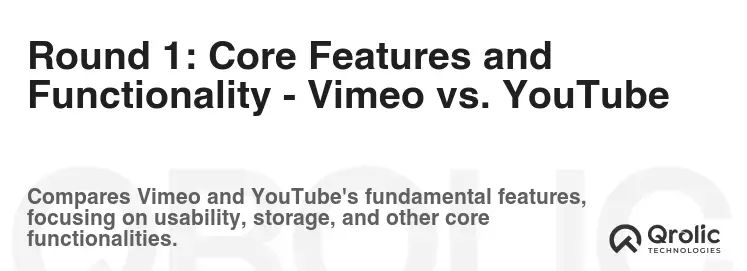
Let’s break down the fundamental features offered by each platform:
YouTube: The Colossus of Content
- Massive Audience Reach: YouTube boasts over 2 billion monthly active users, making it the undisputed king of online video platforms. This vast audience provides unparalleled potential for exposure.
- Free Hosting (with limitations): YouTube offers free video hosting, making it an attractive option for businesses on a budget. However, free accounts come with limitations on storage, bandwidth, and customization.
- Robust Search Engine Optimization (SEO): YouTube is owned by Google, giving it a natural advantage in search rankings. Its powerful search algorithm and SEO tools make it easier for viewers to discover your videos.
- Monetization Opportunities: The YouTube Partner Program allows creators to earn revenue through ads displayed on their videos. However, meeting eligibility requirements and navigating ad policies can be challenging.
- Live Streaming Capabilities: YouTube Live enables real-time broadcasting to a global audience, making it ideal for webinars, product launches, and live events.
- Community Features: YouTube fosters a strong sense of community through comments, likes, subscriptions, and interactive features like polls and cards.
- Extensive Analytics: YouTube Analytics provides detailed insights into viewer demographics, engagement metrics, and traffic sources, helping you refine your video strategy.
- Content ID System: YouTube’s Content ID system helps protect your copyrighted material by automatically detecting and managing unauthorized use of your videos.
Vimeo: The Curator of Quality
- Professional Aesthetic: Vimeo is known for its high-quality video content and ad-free viewing experience, making it a preferred choice for filmmakers, artists, and businesses seeking a polished image.
- Advanced Customization Options: Vimeo offers extensive customization options for the video player, allowing you to brand the viewing experience and seamlessly integrate it with your website.
- Higher Quality Video Playback: Vimeo supports higher bitrates and resolutions, resulting in superior video quality compared to YouTube.
- Ad-Free Environment: Vimeo’s ad-free environment provides a more focused and immersive viewing experience, enhancing brand perception.
- Robust Privacy Controls: Vimeo offers granular privacy settings, allowing you to control who can view your videos and where they can be embedded.
- Excellent Customer Support: Vimeo provides responsive and helpful customer support, addressing technical issues and guiding users through the platform.
- Detailed Analytics: Vimeo Analytics offers in-depth insights into viewer behavior, engagement metrics, and geographic data, empowering data-driven decision-making.
- Portfolio-Focused Presentation: Vimeo emphasizes showcasing creative work, making it ideal for businesses looking to present a portfolio of their video productions.
Round 2: Pricing and Plans – What Will It Cost You?
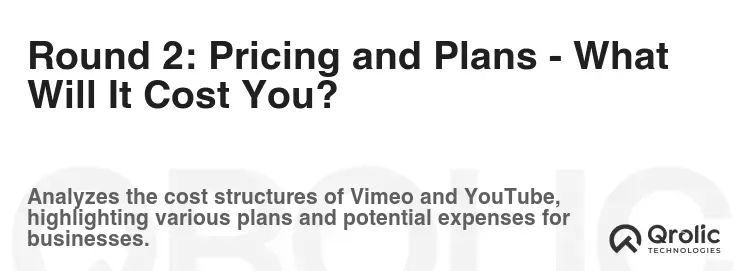
The pricing structure is crucial for budgetary considerations.
YouTube Pricing
- Free: Limited storage, basic features, watermarks (possibly), ad revenue sharing (if eligible).
- YouTube Premium: Removes ads for viewers, background playback, offline downloads (but doesn’t give you more features for video hosting). This is more for viewers.
Vimeo Pricing
Vimeo employs a tiered subscription model, offering various plans with increasing features and storage capacity:
- Free: Limited storage (500MB total, 5GB per week), basic features, Vimeo branding.
- Starter ($12/month): 60GB storage per year, collaboration tools, advanced analytics.
- Standard ($20/month): 250GB storage per year, custom video templates, lead generation tools.
- Advanced ($65/month): Unlimited storage, live streaming, advanced marketing integrations, and team collaboration features.
- Enterprise (Custom Pricing): Dedicated support, enhanced security, customized solutions for large organizations.
Key Takeaway: YouTube offers a free option, while Vimeo relies on paid subscriptions. Consider your storage needs, feature requirements, and budget when evaluating these pricing models.
Round 3: Target Audience & Community – Where’s Your Tribe?
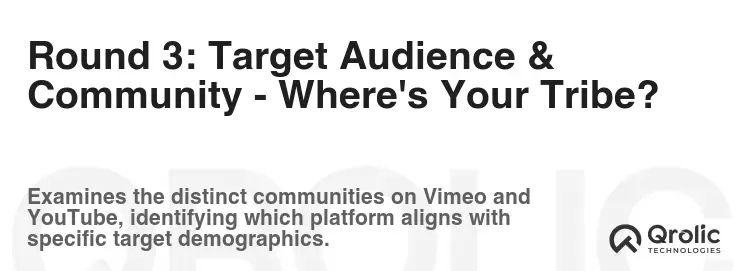
- YouTube: Caters to a broader, more diverse audience, encompassing all age groups, interests, and demographics. Content ranges from amateur vlogs to professional productions.
- Vimeo: Attracts a more professional and creative audience, including filmmakers, artists, designers, and businesses seeking high-quality content and a sophisticated viewing experience.
Strategic Consideration: Consider your target demographic. If you’re aiming for mass appeal, YouTube’s vast reach is a significant advantage. If you’re targeting a niche audience with discerning tastes, Vimeo’s curated environment might be more suitable.
Round 4: Customization & Branding – Making It Your Own
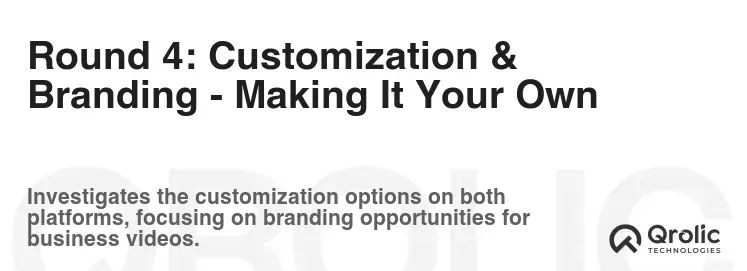
- YouTube: Offers limited customization options for the video player, with minimal control over branding elements. You can customize your channel page but limited customization for individual video players.
- Vimeo: Provides extensive customization capabilities, allowing you to embed videos with a fully branded player, custom end screens, and personalized calls to action.
Brand Consistency: Vimeo’s customization features enable you to create a seamless brand experience across your website and video content, reinforcing brand recognition and trust.
Round 5: SEO & Discoverability – Getting Found Online
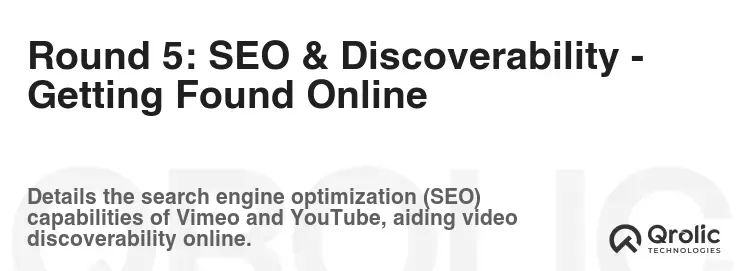
- YouTube: Benefits from its integration with Google Search, offering powerful SEO tools and a high probability of appearing in search results. Optimizing video titles, descriptions, and tags is crucial.
- Vimeo: Requires more proactive SEO efforts, as it doesn’t have the same inherent search advantages as YouTube. Optimizing video metadata and embedding videos strategically on your website are essential.
Search Engine Advantage: While both platforms offer SEO capabilities, YouTube’s connection to Google gives it a distinct advantage in search rankings. However, strategic SEO practices can improve your Vimeo video discoverability.
Round 6: Privacy & Security – Protecting Your Content

- YouTube: Offers basic privacy settings, including public, unlisted, and private options. However, unauthorized downloads and distribution can be a concern.
- Vimeo: Provides granular privacy controls, allowing you to restrict video access to specific domains, password-protect content, and disable downloads.
Content Security: If you’re handling sensitive business information or proprietary content, Vimeo’s robust privacy settings offer a higher level of protection against unauthorized access.
Round 7: Analytics & Reporting – Measuring Your Success

- YouTube: Provides detailed analytics, including viewer demographics, engagement metrics (watch time, audience retention), traffic sources, and real-time data.
- Vimeo: Offers in-depth analytics, including geographic data, engagement heatmaps, and integration with Google Analytics. Vimeo’s analytics are often considered more detailed and insightful.
Data-Driven Insights: Both platforms provide valuable analytics, but Vimeo’s advanced reporting features offer a more granular understanding of viewer behavior, enabling more precise optimization.
Round 8: Monetization Strategies – Turning Views into Revenue
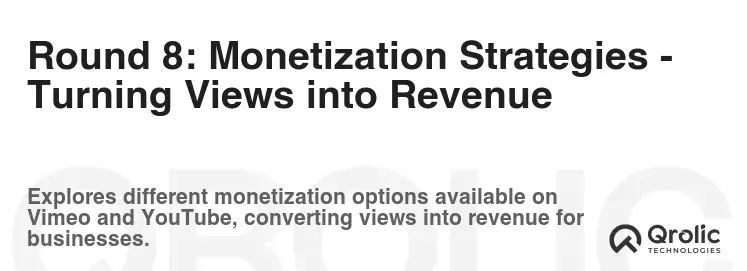
- YouTube: Offers monetization through the YouTube Partner Program, which allows creators to earn revenue from ads displayed on their videos. Requires meeting eligibility requirements and adhering to ad policies.
- Vimeo: Offers monetization through Vimeo On Demand, which allows creators to sell or rent their videos directly to viewers. Provides greater control over pricing and revenue sharing.
Revenue Generation: YouTube’s ad-based monetization model is suitable for content with broad appeal, while Vimeo On Demand is ideal for premium content that viewers are willing to pay for.
Round 9: Live Streaming – Broadcasting in Real-Time
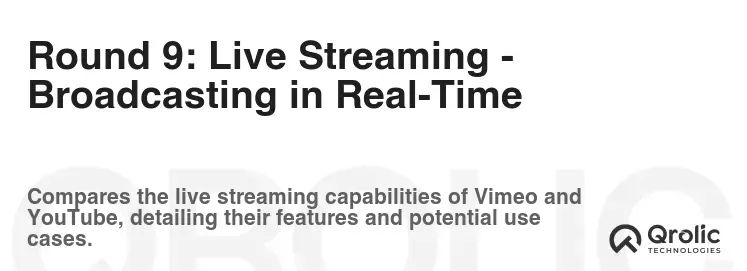
- YouTube: Offers live streaming capabilities through YouTube Live, enabling real-time broadcasting to a global audience. Provides features like chat, polls, and Q&A sessions.
- Vimeo: Offers live streaming capabilities with higher-quality video, advanced production tools, and greater control over the viewing experience. Requires a paid Vimeo plan.
Real-Time Engagement: Both platforms offer live streaming, but Vimeo’s premium features cater to businesses seeking a professional and high-quality live broadcasting solution.
Scenario Analysis: Which Platform Wins in Specific Situations?

Let’s examine common scenarios and determine which platform is better suited for each:
- Scenario 1: Building Brand Awareness: YouTube wins due to its massive reach and SEO advantages.
- Scenario 2: Showcasing a Portfolio: Vimeo wins due to its emphasis on creative work and professional aesthetic.
- Scenario 3: Internal Training Videos: Vimeo wins due to its robust privacy controls and secure video hosting.
- Scenario 4: Generating Leads: Vimeo (with advanced plans) wins with lead capture tools within the player.
- Scenario 5: Monetizing Content through Ads: YouTube wins due to its established advertising infrastructure and Partner Program.
- Scenario 6: Hosting a Webinar: Both are viable, but Vimeo offers higher quality and more customization.
- Scenario 7: Budget-Conscious Startup: YouTube wins with its free hosting option.
The Hybrid Approach: Best of Both Worlds
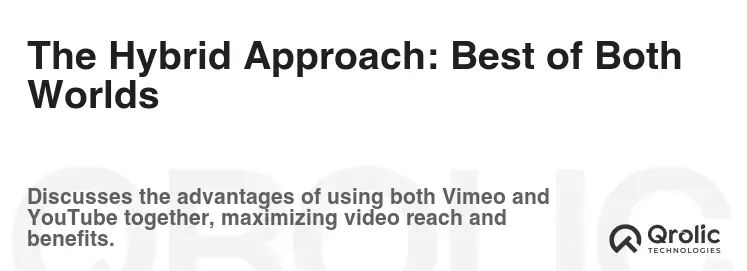
In some cases, the optimal strategy involves using both YouTube and Vimeo strategically. You might use YouTube for building brand awareness and driving traffic, while using Vimeo for hosting sensitive internal content or showcasing a polished portfolio on your website.
Case Studies: Real-World Examples

- Example 1: A Film Production Company: Uses Vimeo to showcase its high-quality film productions and offer Vimeo On Demand rentals, while using YouTube to promote trailers and behind-the-scenes content.
- Example 2: A Marketing Agency: Uses YouTube to share educational videos and tutorials to a broad audience, while using Vimeo to host private video presentations for clients.
- Example 3: A Software Company: Uses Vimeo to host internal training videos and product demos, ensuring privacy and security.
Practical Steps: Making Your Decision

Here’s a structured approach to help you decide between Vimeo and YouTube:
- Define Your Goals: Clearly outline your objectives for video marketing (e.g., brand awareness, lead generation, sales).
- Identify Your Target Audience: Determine the demographics, interests, and viewing habits of your ideal customers.
- Assess Your Budget: Evaluate your financial resources and determine how much you’re willing to invest in video hosting.
- Prioritize Key Features: Identify the features that are most important to your business (e.g., customization, privacy, analytics).
- Evaluate Content Needs: High-end video or just basic content?
- Test Both Platforms: Experiment with both YouTube and Vimeo to experience their features and interfaces firsthand.
- Analyze the Data: Track key metrics and compare the performance of your videos on both platforms.
- Make an Informed Decision: Based on your goals, audience, budget, and data, choose the platform that best aligns with your business needs.
Expert Tips for Maximizing Video Impact
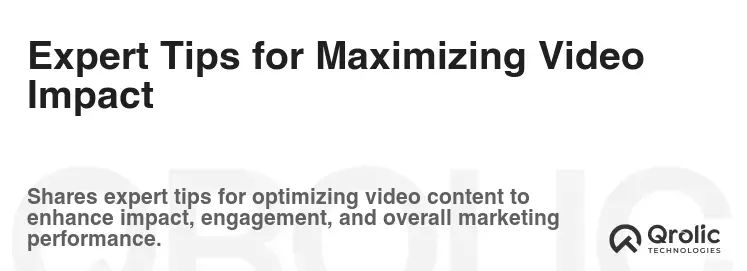
- Optimize Video Titles and Descriptions: Use relevant keywords to improve search engine visibility.
- Create Compelling Thumbnails: Design eye-catching thumbnails that grab viewers’ attention.
- Engage with Your Audience: Respond to comments and questions to foster a sense of community.
- Promote Your Videos: Share your videos on social media, email newsletters, and your website.
- Track Your Analytics: Monitor key metrics to measure the success of your video marketing efforts.
- Continuously Improve: Experiment with different content formats and strategies to optimize your video performance.
Future Trends in Video Hosting

- AI-Powered Video Optimization: Artificial intelligence is being used to automate video editing, optimize video quality, and personalize viewing experiences.
- Interactive Video: Interactive video elements, such as quizzes, polls, and clickable hotspots, are becoming increasingly popular.
- Virtual Reality (VR) and Augmented Reality (AR): VR and AR technologies are transforming the way viewers experience video content.
- Personalized Video Experiences: Video platforms are using data to personalize video recommendations and tailor viewing experiences to individual preferences.
Qrolic Technologies: Your Partner in Video Excellence
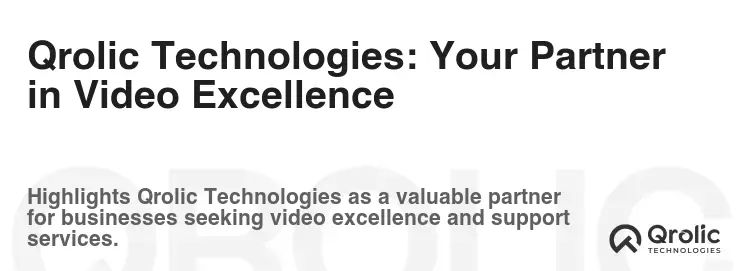
At Qrolic Technologies (https://qrolic.com/), we understand the power of video and its potential to transform your business. We offer a comprehensive suite of video marketing services, including video production, editing, optimization, and distribution. Whether you’re looking to create engaging brand videos, compelling product demos, or high-quality training materials, our team of experienced professionals can help you achieve your video marketing goals. We work closely with you to develop a tailored strategy that leverages the best of both YouTube and Vimeo, ensuring your videos reach the right audience and deliver maximum impact. From initial concept to final delivery, we’re committed to providing exceptional service and helping you unlock the full potential of video. Contact us today to learn more about how Qrolic Technologies can elevate your video marketing efforts.
Conclusion: Making the Right Choice for Your Business
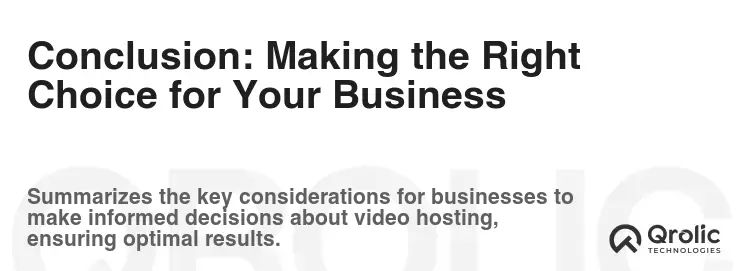
The decision between Vimeo and YouTube depends on your specific business needs, goals, and budget. YouTube offers unparalleled reach and a free hosting option, while Vimeo provides a more professional aesthetic, advanced customization options, and robust privacy controls. By carefully considering the factors outlined in this guide, you can make an informed choice that sets your business up for video marketing success. Remember, a strategic approach that leverages the strengths of both platforms can often yield the best results. Your video marketing journey begins now!

